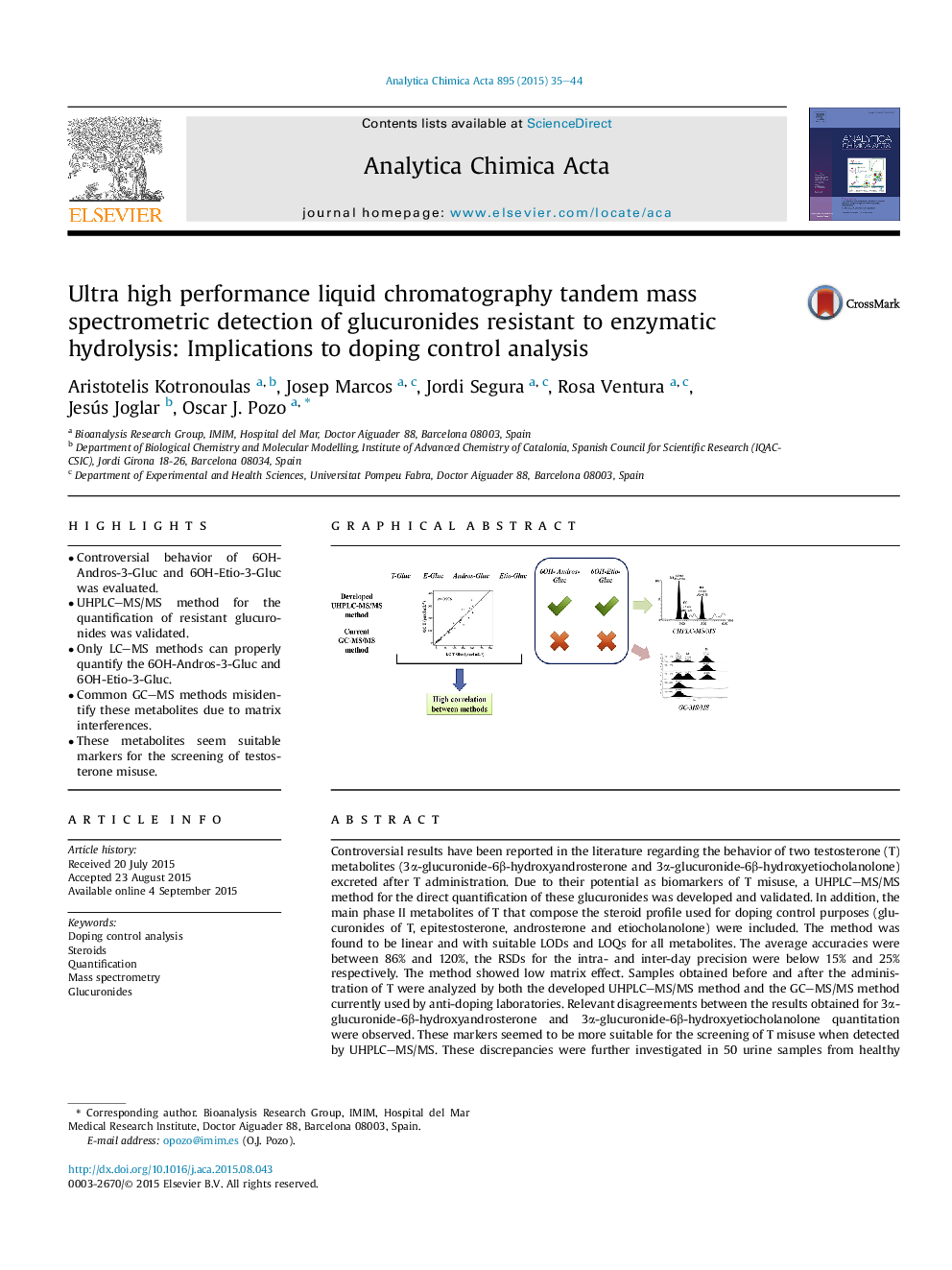| کد مقاله | کد نشریه | سال انتشار | مقاله انگلیسی | نسخه تمام متن |
|---|---|---|---|---|
| 1163302 | 1490937 | 2015 | 10 صفحه PDF | دانلود رایگان |
• Controversial behavior of 6OH-Andros-3-Gluc and 6OH-Etio-3-Gluc was evaluated.
• UHPLC–MS/MS method for the quantification of resistant glucuronides was validated.
• Only LC–MS methods can properly quantify the 6OH-Andros-3-Gluc and 6OH-Etio-3-Gluc.
• Common GC–MS methods misidentify these metabolites due to matrix interferences.
• These metabolites seem suitable markers for the screening of testosterone misuse.
Controversial results have been reported in the literature regarding the behavior of two testosterone (T) metabolites (3α-glucuronide-6β-hydroxyandrosterone and 3α-glucuronide-6β-hydroxyetiocholanolone) excreted after T administration. Due to their potential as biomarkers of T misuse, a UHPLC–MS/MS method for the direct quantification of these glucuronides was developed and validated. In addition, the main phase II metabolites of T that compose the steroid profile used for doping control purposes (glucuronides of T, epitestosterone, androsterone and etiocholanolone) were included. The method was found to be linear and with suitable LODs and LOQs for all metabolites. The average accuracies were between 86% and 120%, the RSDs for the intra- and inter-day precision were below 15% and 25% respectively. The method showed low matrix effect. Samples obtained before and after the administration of T were analyzed by both the developed UHPLC–MS/MS method and the GC–MS/MS method currently used by anti-doping laboratories. Relevant disagreements between the results obtained for 3α-glucuronide-6β-hydroxyandrosterone and 3α-glucuronide-6β-hydroxyetiocholanolone quantitation were observed. These markers seemed to be more suitable for the screening of T misuse when detected by UHPLC–MS/MS. These discrepancies were further investigated in 50 urine samples from healthy volunteers. The two methods gave highly correlated results for all metabolites that are currently included in the athlete's steroid profile confirming the reliability of the UHPLC–MS/MS method. However, the quantification of 3α-glucuronide-6β-hydroxyandrosterone and 3α-glucuronide-6β-hydroxyetiocholanolone, was only possible by using the UHPLC–MS/MS method since three interfering compounds were observed when performing the GC–MS/MS analysis with the most intense ion transitions. These results confirm the potential of the resistant glucuronides as biomarkers of T misuse. Additionally, they suggest that previously reported reference ranges for these metabolites should be reevaluated.
Figure optionsDownload as PowerPoint slide
Journal: Analytica Chimica Acta - Volume 895, 1 October 2015, Pages 35–44
